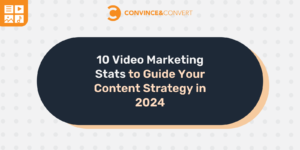Successful email marketing is all about consistency and delivering the right message, to the right audience, at the right time. How do you keep all your email content scheduled and organized effectively in order to meet these expectations?
The answer? An email marketing calendar. They’re an essential tool for planning, scheduling, and organizing your content and delivery dates to keep your strategy on track.
Here are some things they can help you achieve:
- Plan the content you’ll share via email ahead of time.
- Provide team-wide visibility into your email strategy and execution.
- Track your sends and hit deadlines.
Plus, getting organized is highly correlated with marketing success. That’s nothing to sneeze at.
[Tweet “The Best Email Calendar Template You Need to Manage Email Marketing via @CoSchedule”]
Download Your Email Marketing Calendar Template…
Make it easy on yourself and download your email marketing calendar template. This easy-to-use Excel spreadsheet will give you and your email marketing team the bird’s eye view you need to keep every sent email campaign organized.
[content_upgrade_shortcode]
[Tweet “Get your #email #marketing calendar template from @CoSchedule”]
… Or Organize and Schedule ALL Your Newsletters With CoSchedule’s Marketing Calendar
With CoSchedule’s Marketing Calendar and key email service provider integrations (with MailChimp, Campaign Monitor, Constant Contact, and ActiveCampaign), you can:
- Seamlessly integrate with your favorite email marketing platform. You already have a kick-a$$ email platform you know and love, so why give it up? Easily connect your preferred email platform to CoSchedule with just a couple clicks.
- Write click-worthy email subject lines every time. Use CoSchedule’s exclusive Email Subject Line Tester to optimize and perfect every subject line to drive more opens, clicks, and conversions.
- Get full visibility into your ENTIRE marketing strategy. Say “buh-bye” to disjointed marketing content and constantly jumping from screen to screen. With email marketing, it’s easy to see how your email campaigns relate to the rest of your marketing strategy, and quickly make adjustments, if necessary.
Join the Marketing Calendar today and benefit from several, helpful marketing tools.
Table of Contents
- What is an Email Marketing Calendar?
- Determine Who Owns Each Email Send
- Determine Email Topics, Themes, and Seasonality
- Establish an Email Sending Cadence
- Identify the Campaign Email Segment and Consider Your Suppression List
- Clarify the Goal of Your Email Campaign
- Write Your Email Subject Lines
- Plan Your Email Content
- Determine Dates and Times
- Keep Up With the Status of Each Campaign
- Record A/B Test Results
- How to Use CoSchedule as an Email Marketing Calendar
What is an Email Marketing Calendar?
Before we go through the steps involved with creating the best email marketing calendar, let’s address the elephant in the room: what exactly IS an email marketing calendar?
When it comes to email marketing, the key takeaway should always be to plan ahead and do the work in advance for your campaigns. Email marketing calendars are a way for your whole team to see upcoming projects, who’s doing what, and what projects are ready for launch.
If you don’t plan ahead on your email marketing campaigns, sooner or later, you’ll be overwhelmed with approaching deadlines and small project windows.
To help you get a grasp of how your email marketing calendar should perform, we have provided a great template in the download to get you started. When you feel comfortable with a simple spreadsheet template like this one, try using CoSchedule’s email marketing calendar and do more with your campaigns.

Step 1: Determine Who Owns Each Email Send
The first thing you need to identify in your email marketing calendar is who owns each campaign. This person is the point-man for every aspect of a campaign and ensures it goes off without a hitch. The primary duties of this role will be:
- Writing email subject lines and body content.
- Collaborating with designers to create email graphics, if necessary.
- Determining which list segments will receive the email.
The owners of each project should be recorded in your email marketing calendar.
[Tweet “The owners of each project should be recorded in your email marketing calendar.”]
 Action Item: Select your email project owner for each campaign. This person may change depending on the campaign that needs to be created by your email marketing team.
Action Item: Select your email project owner for each campaign. This person may change depending on the campaign that needs to be created by your email marketing team.
Step 2: Determine Email Topics, Themes, and Seasonality
Before you begin planning your campaign, you need to decide what topics your emails will cover. Are you launching a new product or promoting an upcoming webinar, or are you hoping to provide new subscribers with helpful introduction content?
Work with your team to decide the topic each email of your campaign will cover. Some common themes are:
- New product launch
- Upcoming webinar
- Weekly newsletter (topics will change week to week)
- New content you’ve written
- New functionality for your existing product
- Upcoming sale or event

It’s also important to identify which season this campaign topic/theme is associated with.
You could stick to the standard four, or you can also include seasonal events, like holiday shopping season.
Why would you want to determine your seasons so far in advance?
That’s the beauty of using an email marketing calendar; you can plan everything. By planning ahead, you can show your team when they can expect to be working on a larger number of emails and adjust their workload to accommodate them.
For example, for a business-to-consumer retail store, it may make sense for your organization to send a lot more email during the holiday season in November and December than in March.
You could have your team working on those November emails earlier in the year — or during their downtime in March — to ensure they won’t be so stressed by the time your holiday campaigns roll out.
 Action Items:
Action Items:
- Work with your email marketing team to determine the topics for each of your campaigns.
- Record each topic in your email marketing calendar template that complements this article.
- Decide what season in which each email campaign is going to be sent.
Step 3: Establish an Email Sending Cadence
You’ll also need to identify the number of emails that need to be created for each campaign.
That number can be hard to figure out.
How many emails are too many? What’s the borderline between spamming your audience and sending them just the right amount of content? Start with these basic email delivery schedules for different types of content you might need to promote.
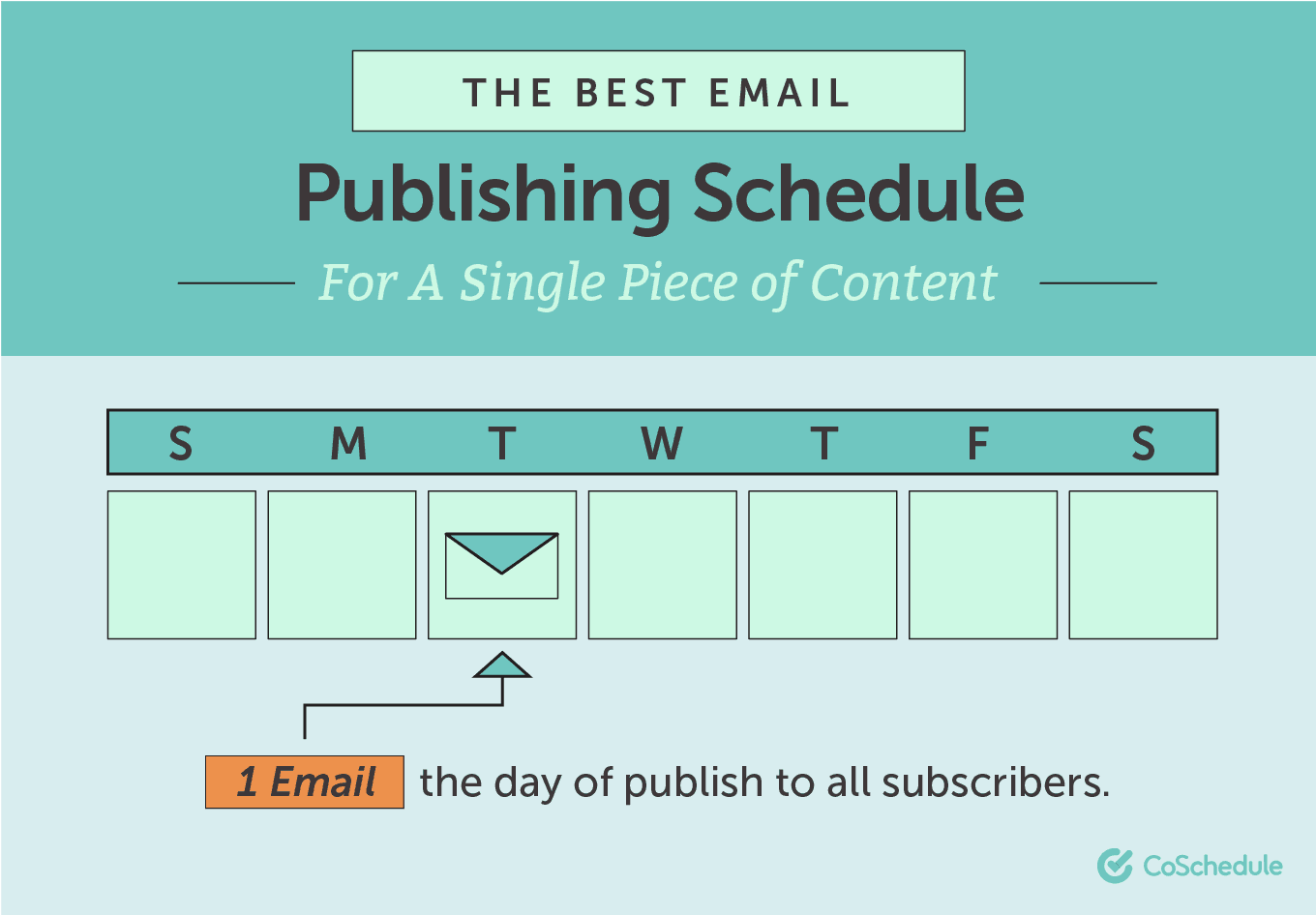
What if you’re doing more than just a single piece of content? What if you’re promoting a product launch? Here’s your email publishing schedule for that, too.
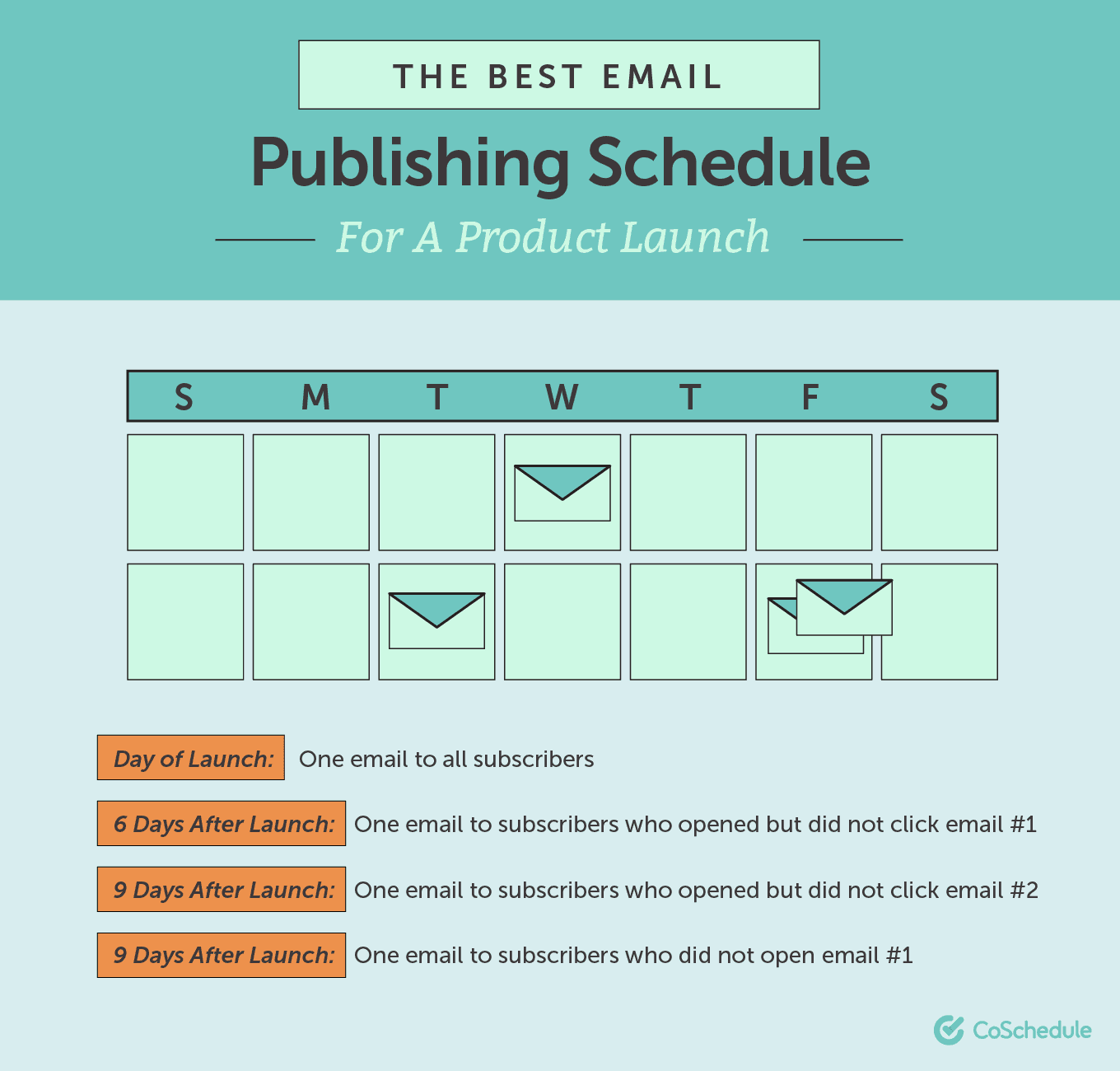
What about a webinar email promo template?
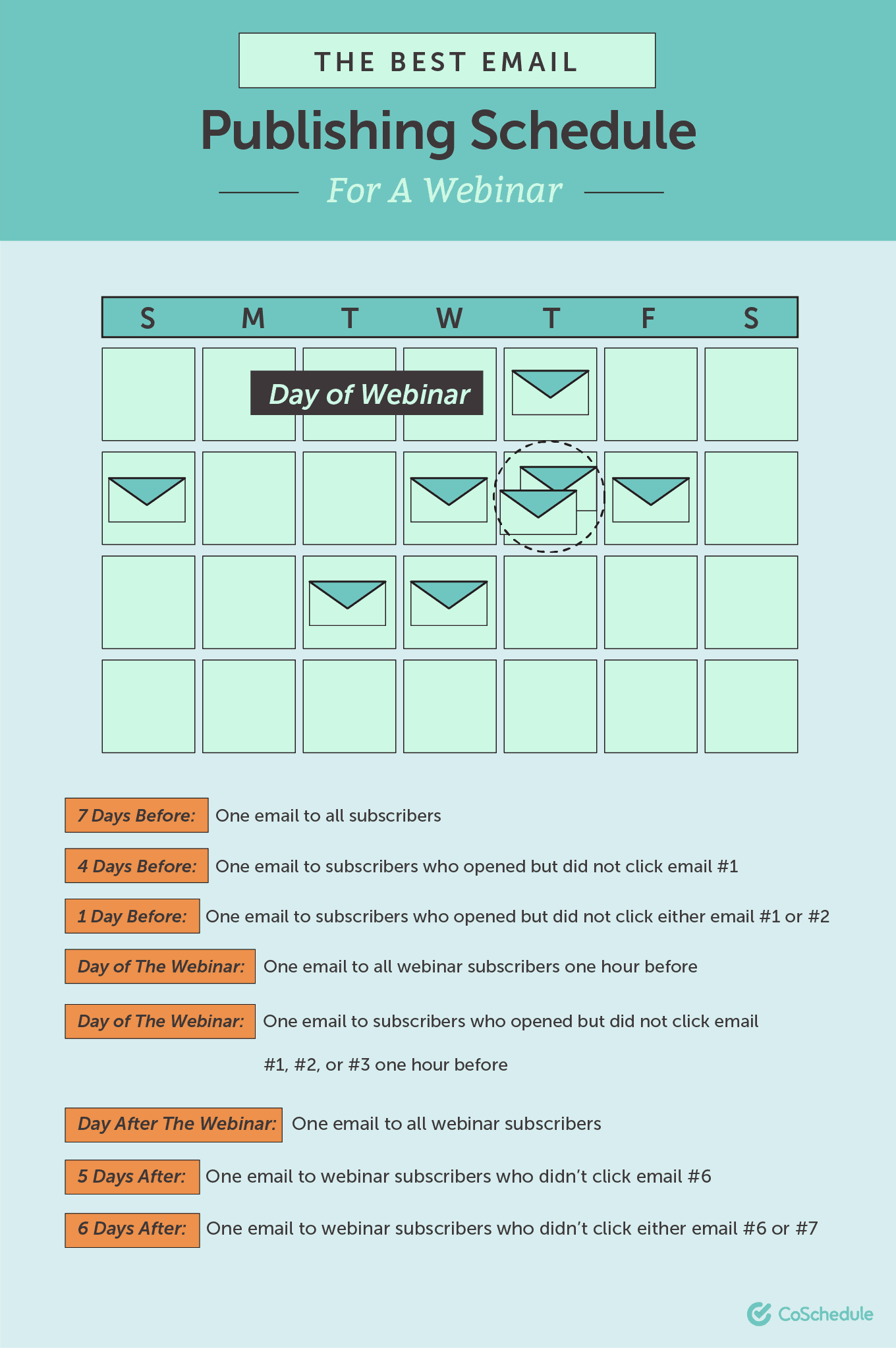
If you decide to send out a newsletter, try sending one at least once a month or weekly, if you can manage to create enough content. If you’re going for one a week or one a month, send your newsletters on Wednesdays, as that is considered the best day to send emails.
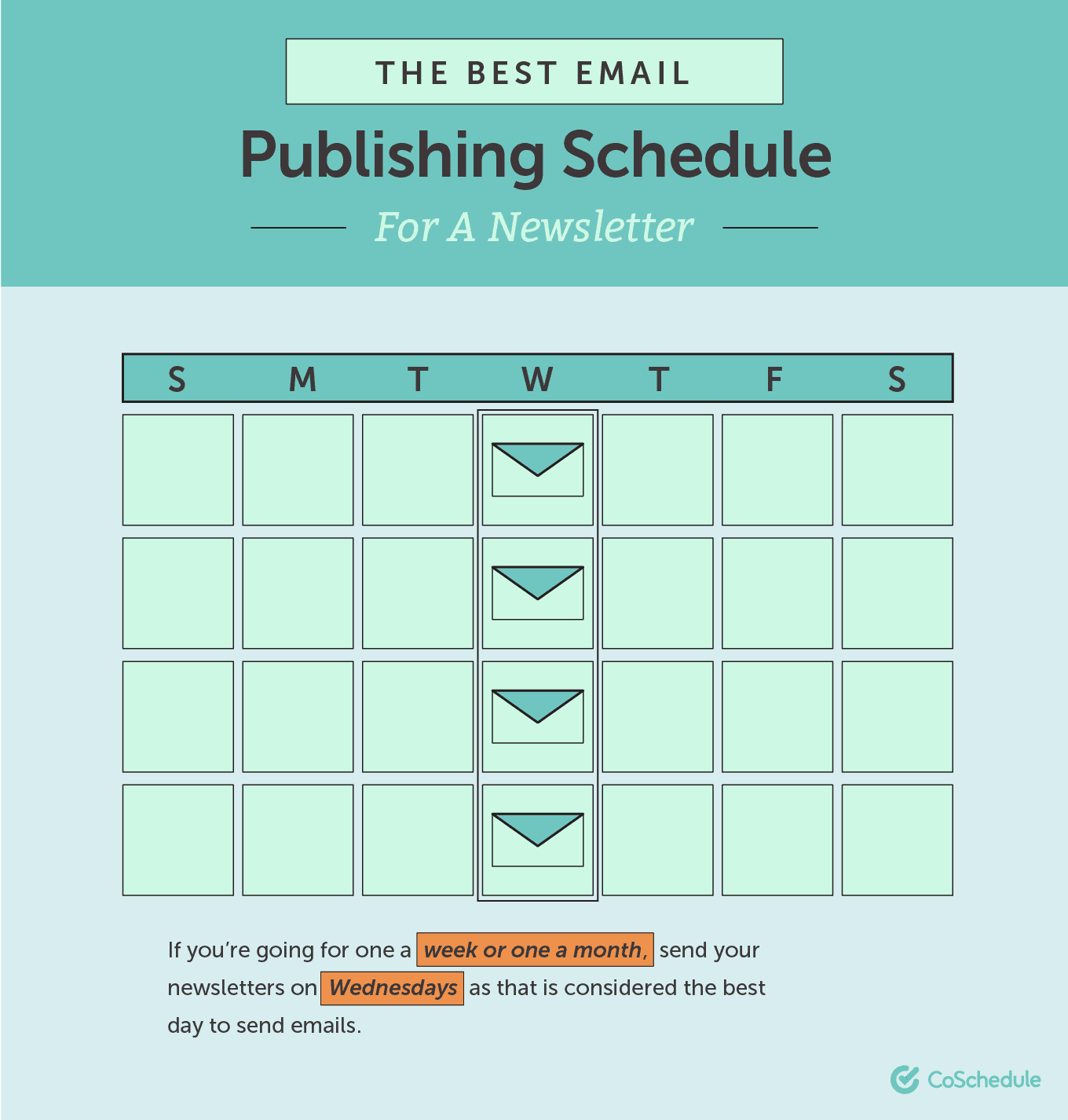
Record each email you want to send on your calendar.
 Action Items:
Action Items:
- Pull the number of projected emails for each campaign.
- List each email for the campaign in your calendar.
Step 4: Identify the Campaign Email Segment and Consider Your Suppression List
Your email calendar should also contain information about which list you plan to send this campaign.
For example, you could have a campaign that goes to everyone on your list, or you could say this campaign should only go to people who attended your last webinar. However, if you don’t have an email list to send your content to, you won’t get very far.
Plus, you don’t want to blast your emails to every person on your list because not all of your subscribers are in the same phase of your marketing funnel.
[Tweet “You don’t want to blast your emails to every person on your email list.”]
For example, if you have a customer who is just learning about your product, they don’t need to see an email that encourages them to buy right this second.
How can you do all of this? First, you need to build your list. Try a few of the following tactics and see which ones your audience responds to:
- Add CTA’s to your website.
- Provide them with something of value that they can download in exchange for their email address.
- Publish content on other sites and encourage readers to learn more by joining your email list.
Growing your email list is all about getting creative. The more value you can provide to your subscribers, the better.
Once you’ve built your email list, you can segment it out based on actions subscribers have taken on your site.
For example, when a subscriber visits a specific product page, add that person into a specific segment for subscribers who are interested in that product. This type of action is possible with many email automation providers like Autopilot, Marketo, and Hubspot.
This segmenting process allows you to get specific and send targeted messages at the right time to the right subscribers. The right message at the right time can help increase your conversions if it’s done correctly.
There are many different ways you can segment your list. In fact, Hubspot has 30 of them listed to help you get started.

Once you identify who you are sending your emails to, you may need to determine who you are not sending your emails to.
Maybe there is a group in your email list that needs to see a different message than the one you’ve planned for this campaign.
Remember when you took all that time to segment your email marketing list? Now you can decide who doesn’t need to see specific emails you want to send.
Add excluded segments to your calendar template.
 Action Items:
Action Items:
- Build your email list.
- Decide how you want to segment your email list.
- Choose your segments based on where your subscribers are at in their buying process.
- Identify which of your email lists should be excluded from each campaign.
Step 5: Clarify the Goal of Your Email Campaign
What goal do you want your email campaign to accomplish? Are you trying to sell more of a particular product or are you trying to build awareness for your brand?
Setting goals touches every single part of your marketing including your emails. These goals help define the purpose of you sending your email in the first place.
Each goal you create for your email campaigns should be S.M.A.R.T or:
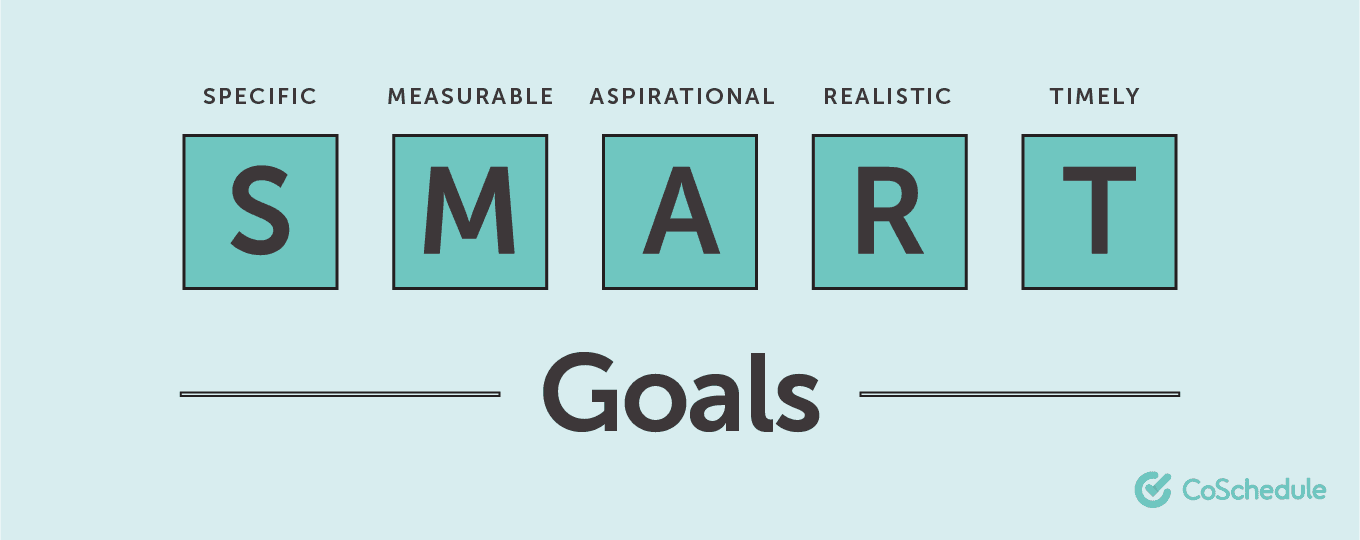
Creating goals doesn’t have to be complicated. Since you know the topics of each of your campaigns, your goals should come naturally.
For example, if you’re launching a new product, your goal could be to reach X amount of sales within one week. If you’re promoting a webinar, your goal will revolve around increasing your signups.

Step 6: Write Your Email Subject Lines
Subject lines can be a bit of a pain to write.
What makes a good subject line? Should you include emojis in your subject lines? What language should you add in your subject lines to help increase open rates?
CoSchedule just made it easy to write great subject lines with the introduction of the Email Subject Line Tester.
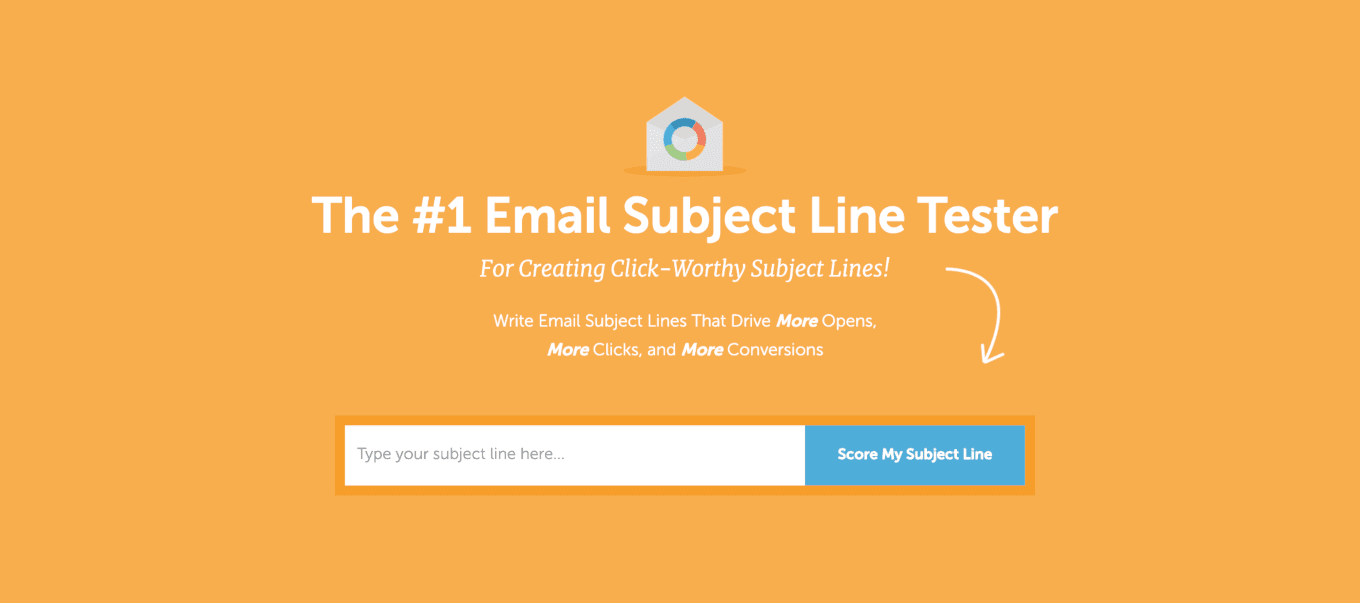
Hit Score My Subject Line, and the tester will show you ways to improve your subject line:
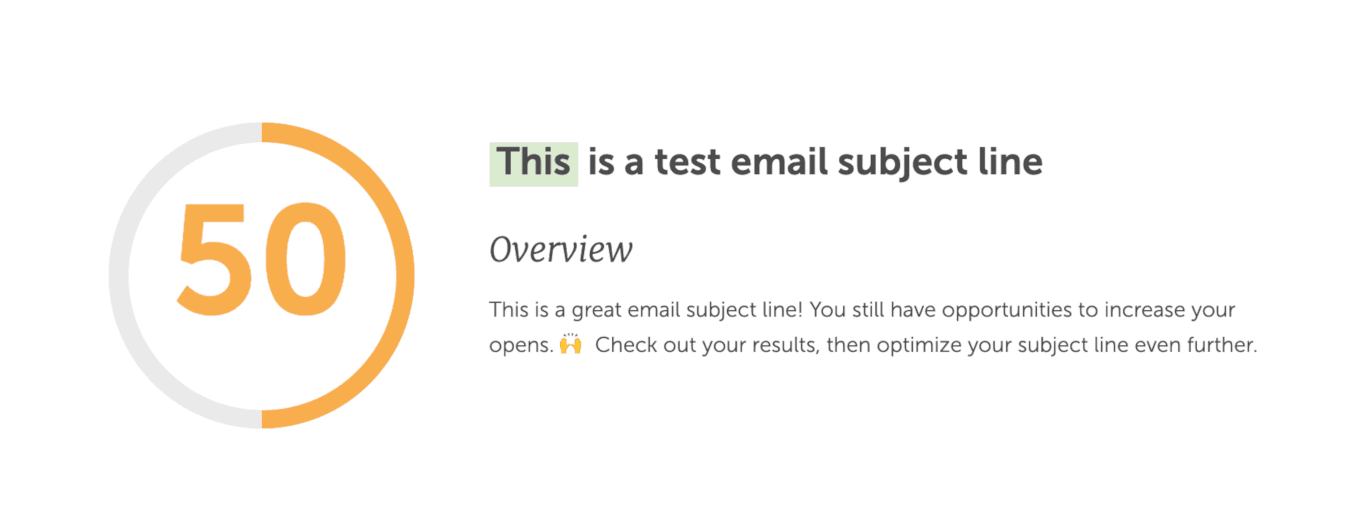
Include at least two subject lines for your A/B test and record them on your calendar.
 Action Items:
Action Items:
- Write potential subject lines.
- Run them through the Email Subject Line Tester.
- Choose your top two subject lines for your A/B test.
Step 7: Plan Your Email Content… Don’t Forget to Include Links to Graphics and Videos
Next, determine which content you’ll share in each email. For the sake of this template, we will call each content block in your newsletter a “lead story”. Each lead story should be a link, article, product, or other piece of content you’ll place in the email. This doesn’t need to be the exact email copy you’ll write, just the items the email will promote.

One of the last elements to record in your calendar are links to graphics and videos that have been created for each email in your campaign.
This is important for your entire email marketing team because they need to be able to access which images and videos are associated with which email. If everything is in one folder, you run the risk of the wrong image being sent to the wrong email.
Each image and video should be linked to in your calendar, so it is easily accessible by the campaign owner.
 Action Items:
Action Items:
- Work with designers to create graphics or videos for your emails.
- Upload them to a file storing system like Dropbox or Google Drive.
- Link back to the folder in your calendar.
Step 8: Determine the Dates and Times Each Email Will Be Sent
What date and time is each email being sent out on? This is an essential element to establish in your email marketing calendar because it allows your marketing team to determine when they need to start working on an email to make sure that it gets done on time.
First, let’s cover the best time to send your emails. According to ten studies the best times to send your emails are:
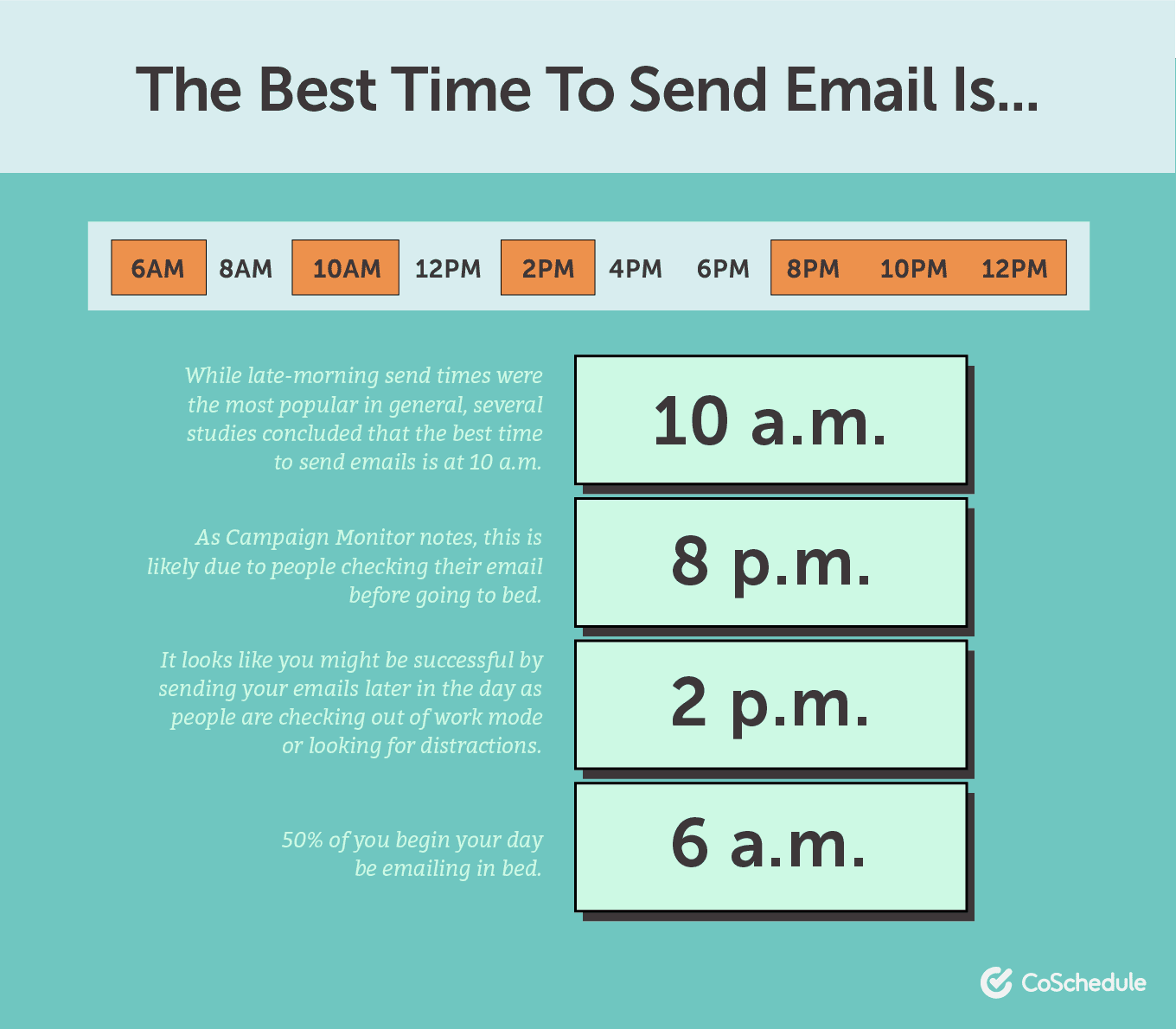
While the best days to send email are:
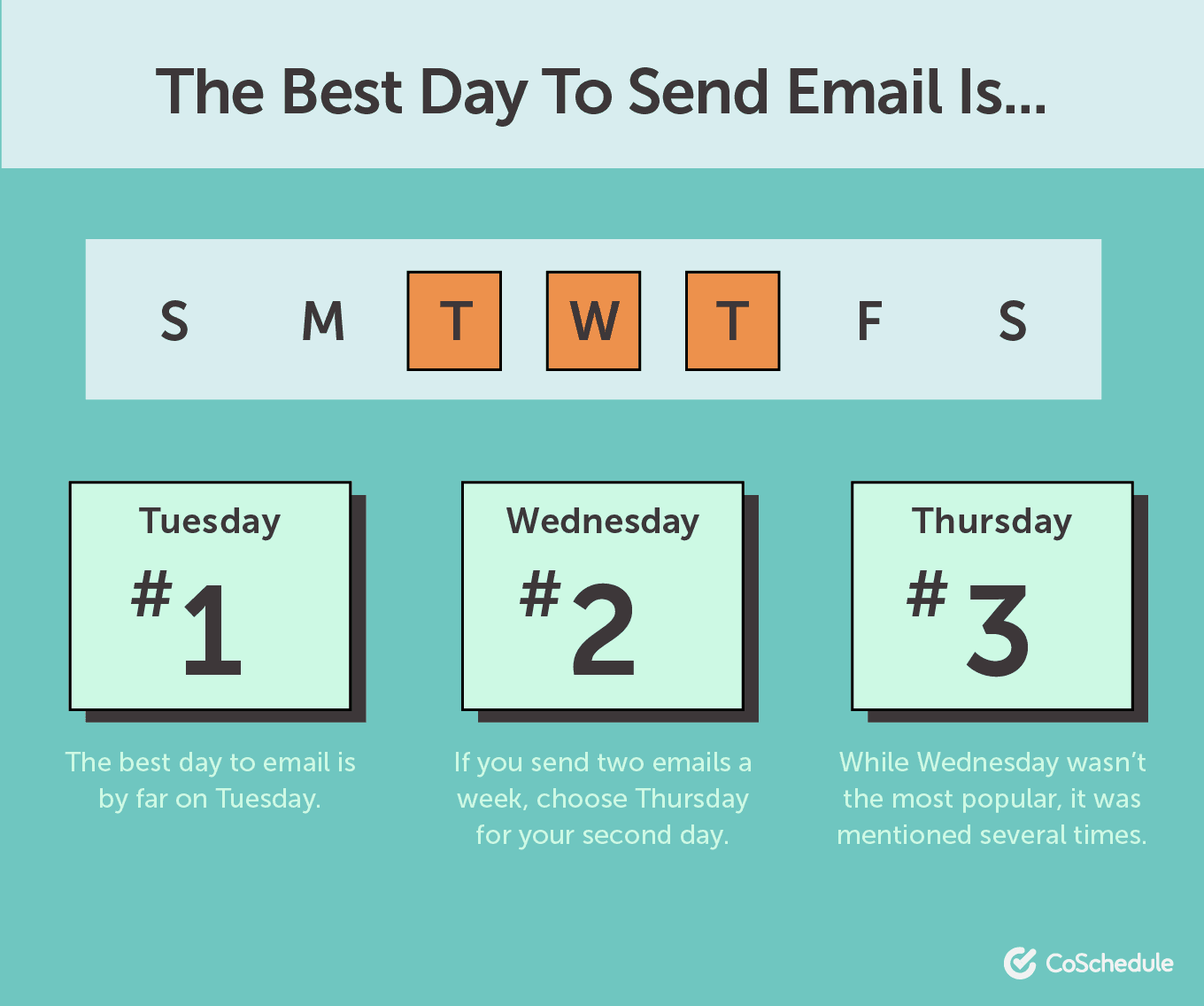
Now that’s not to say that these are the times and days to send your emails on. You’ll need to experiment and see which days and times your audience prefers or is the most active. Try the following times and dates to start.
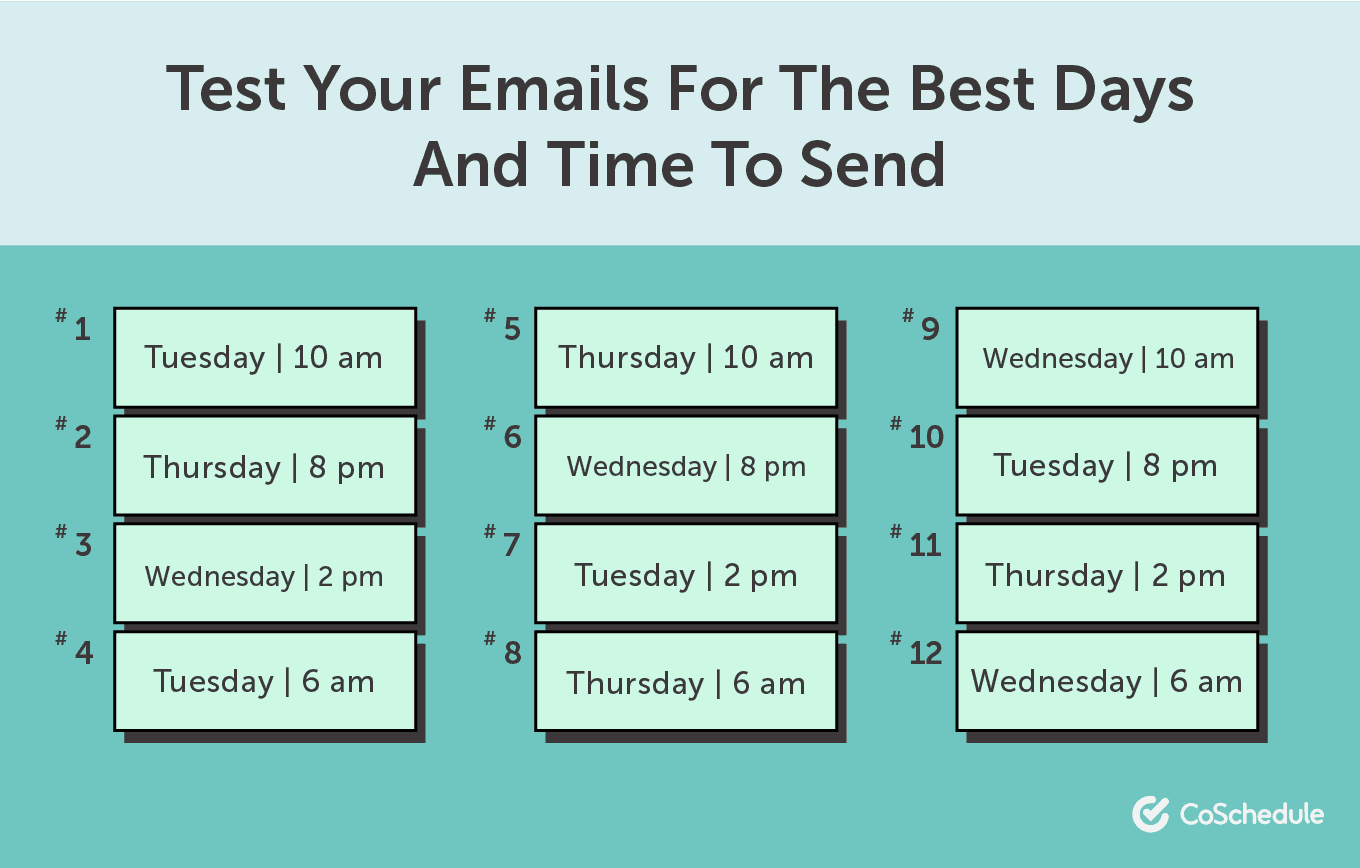
Once you have the days and times determined for each of your email sends, you can work backward to determine when your team needs to start working on the campaign to get it done on time.
For example, let’s say your email publishing workflow looks something like this:
- Email campaign owner chooses campaign topics and number of sends: One Day
- Copywriters write emails: Two Days
- Copywriters edit emails: One Day
- Campaign owner approves emails: One Day
- Designers create images and videos: Three Days
- Designers edit images and videos: One Day
- Images and videos are approved by campaign owner: One Day
- Copy and graphics are added to email platform: One Day
- Email lists are chosen: One Day
- Email is ready for publish: One Day
In this case, your email marketing team would need to work on a campaign at least 13 days before it begins. You may even add extra buffer days in case the work gets off course.
Equipped with that information, you can select publish dates and times that maximize each email you send. Record your publish date times on your calendar.
 Action Items:
Action Items:
- Using the best times to send an email and your audience’s preferences, determine what time you’re going to send your emails.
- Repeat the process to decide which days you’re going to send your emails on.
- Use those dates to determine when your team needs to start working on each of your campaigns.
Step 9: Keep Up With the Status of Each Campaign
Your email marketing calendar should show the status of each of your email marketing campaigns. That way you, as a manager, can see what’s coming up, what’s staged and ready to send, and what your team is working on next.
[Tweet “Your email marketing calendar should show the status of each of your email marketing campaigns.”]
Break down the status of your campaign into three sections:
- New: This is a new campaign that has recently been added to your calendar. No one on your email marketing team has touched this campaign.
- In-progress: Your email team is working on content, graphics, and more for this email. Once they are complete, they will move on to the project owner for final review.
- Complete: At this point, the email has been designed, subject lines are written, and the project owner is confident that this email is ready to be sent to the identified list.
Update the status of each of your campaigns regularly (at least weekly) in your template.
 Action Items:
Action Items:
- Set up weekly syncs with your email marketing team.
- Review any new campaigns that have been added to the calendar. Update their status.
- Review the in-progress campaigns. Update their status as needed.
- Review completed campaigns. Update their status in your email marketing calendar template when done.
Step 10: Record the A/B Test Results of Your Subject Lines
After you have sent your campaign, identify which of the two subject lines you created, won the A/B test. Most email service providers allow you to A/B test your subject lines within the platform. Based on how each subject line performs, your email platform will take the winning subject line and send it out to the rest of your list.
 Action Items:
Action Items:
- Pull the results of your A/B test.
- Record the winning subject line.
How to Use CoSchedule as an Email Marketing Calendar
The spreadsheet-based template included in this post is a great low-cost option to get started, but you might soon find it’s somewhat limited. In that case, it may be time to consider using CoSchedule’s marketing calendar and Content Organizer with email service provider integrations (MailChimp, Campaign Monitor, Active Campaign, and Constant Contact). Here’s how to get set up and apply this process using CoSchedule.
Setting Up Your Account
Follow a few simple steps to get started:
- Connect your selected ESP. You can choose your provider under Settings.
- Add team members to your account, if you haven’t already. Give your team visibility into your email marketing strategy.
- Head over to the Marketing Calendar. This is where you’ll get started creating your email.
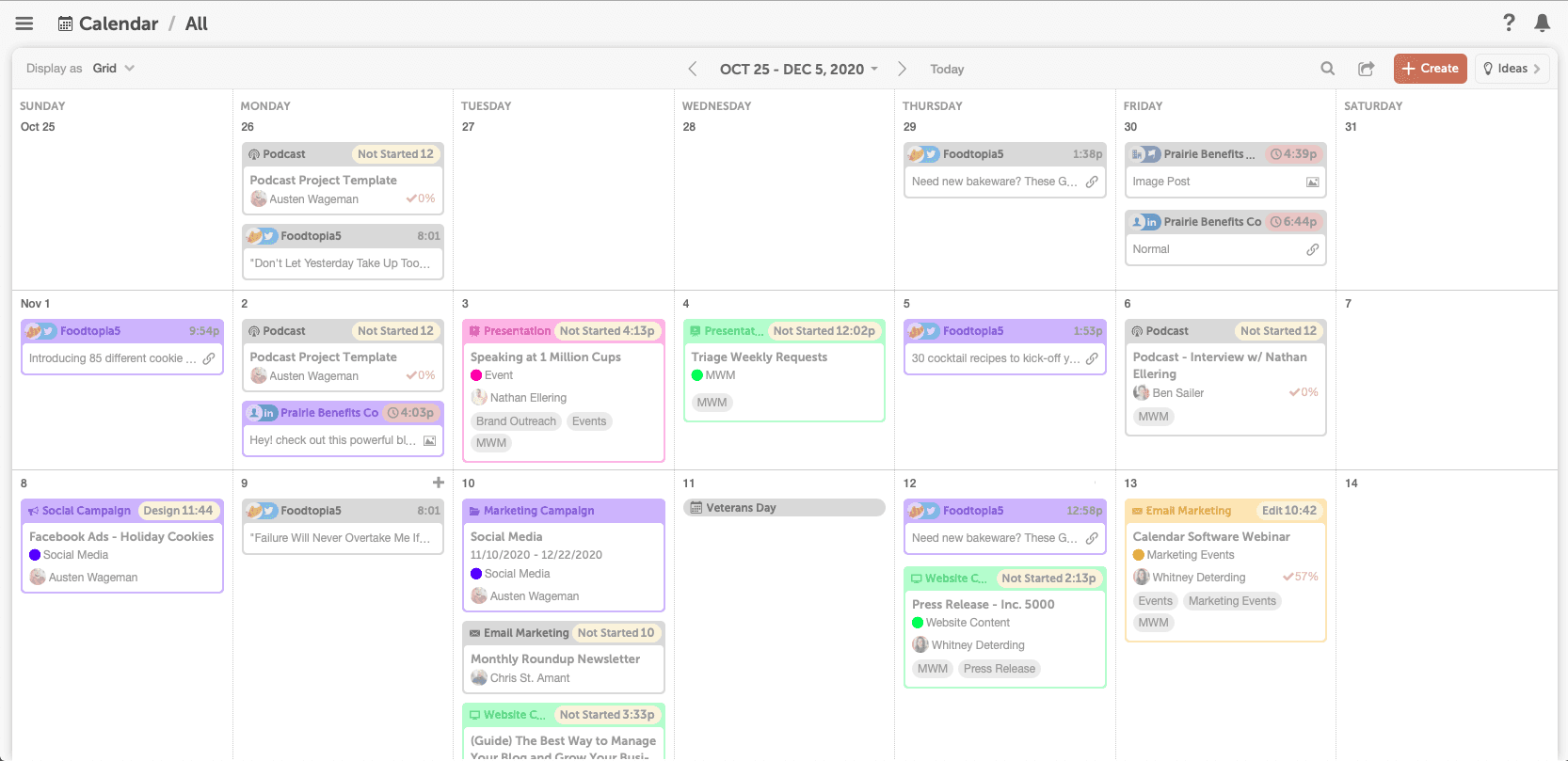
Alternately, if you prefer to manage projects using a Kanban board, you can also use the Kanban Project Dashboard.
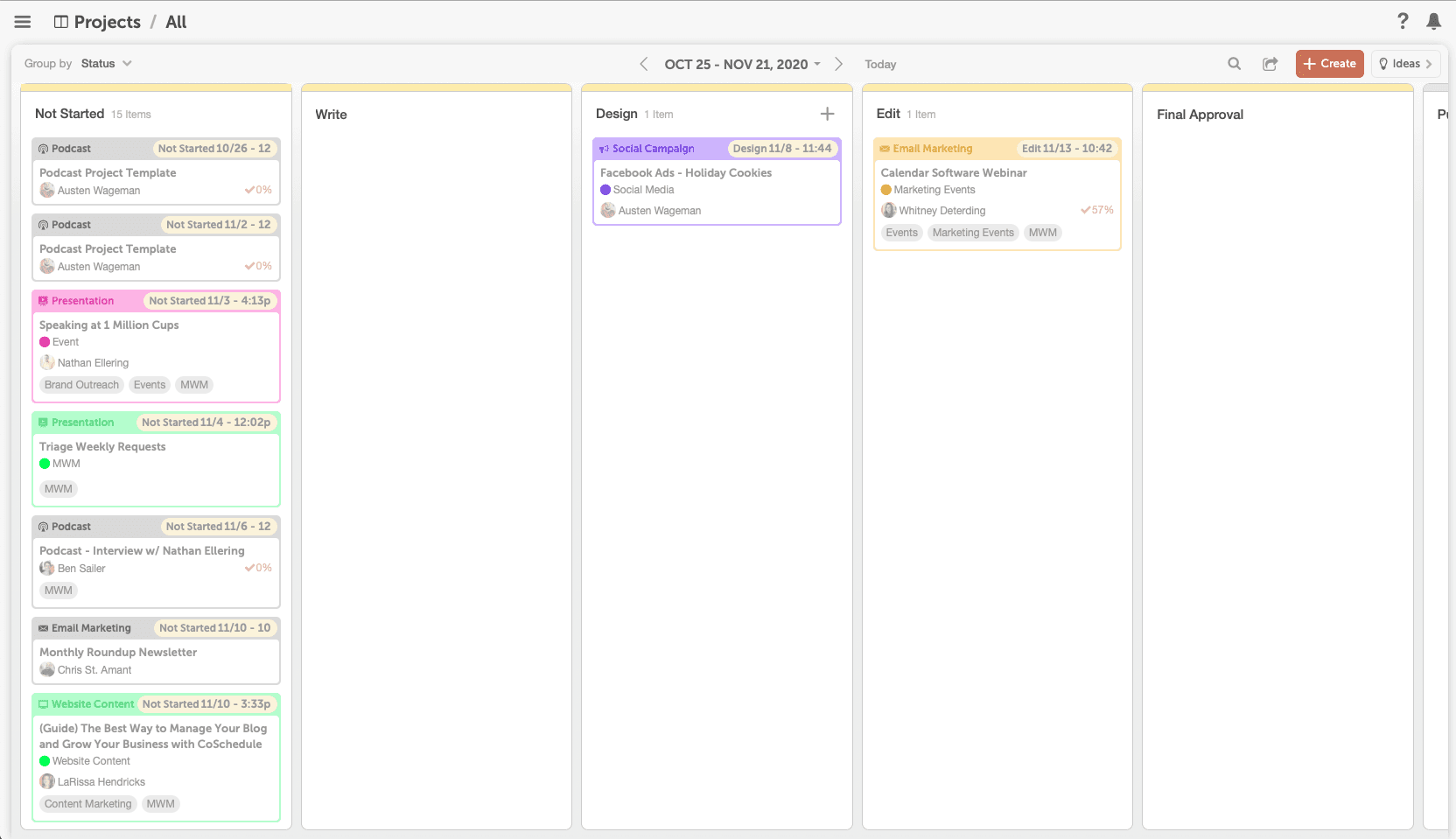
Add an Email Newsletter to Your Marketing Calendar
Now, if you have your email service provider connected to CoSchedule, you can start planning and scheduling email content. To begin, either click a day on the calendar, or click on the +Create button on the calendar.
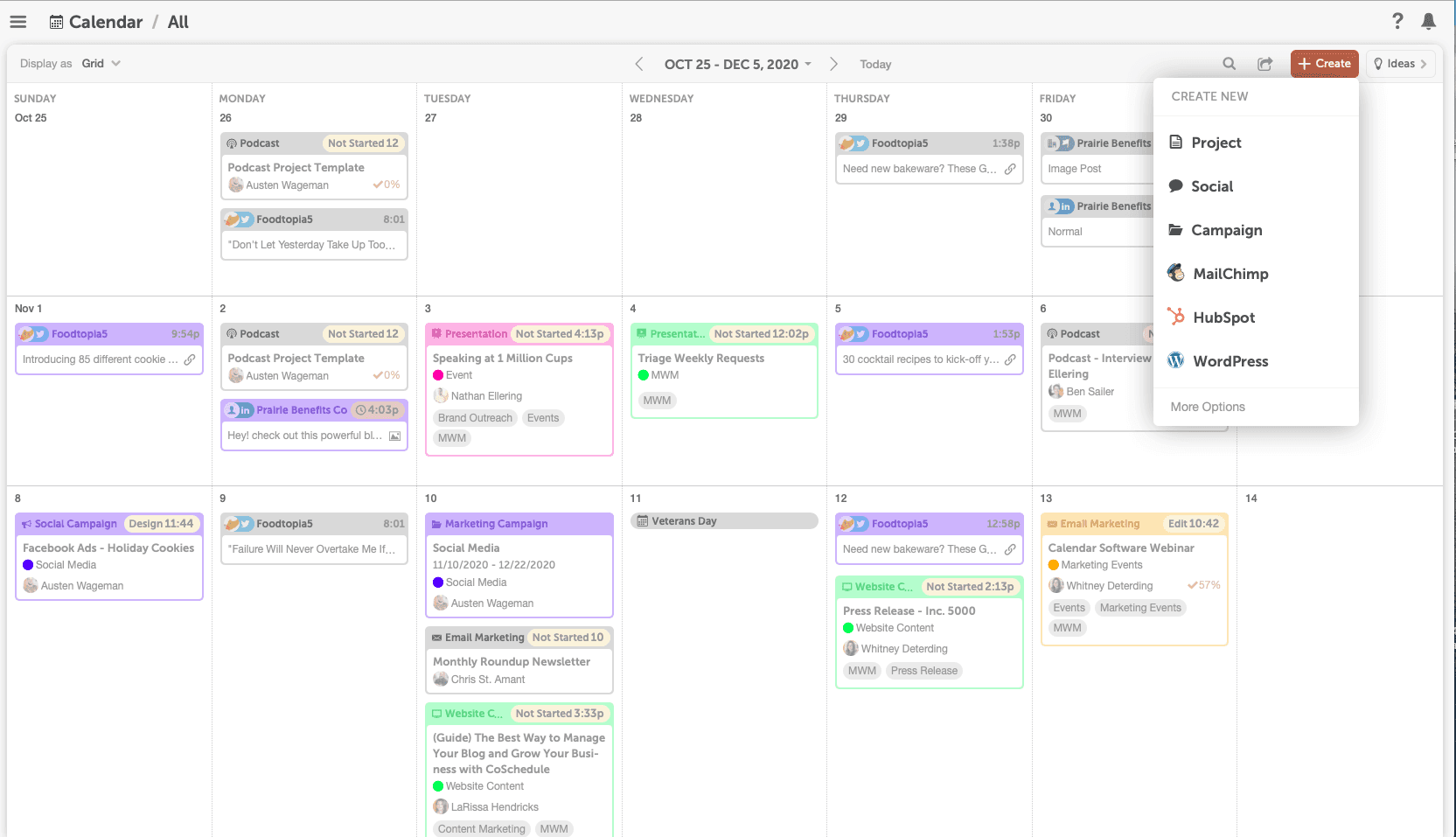
If you’re using the Kanban Project Dashboard, you can start by clicking the + at the top of a column, or by clicking +Create.
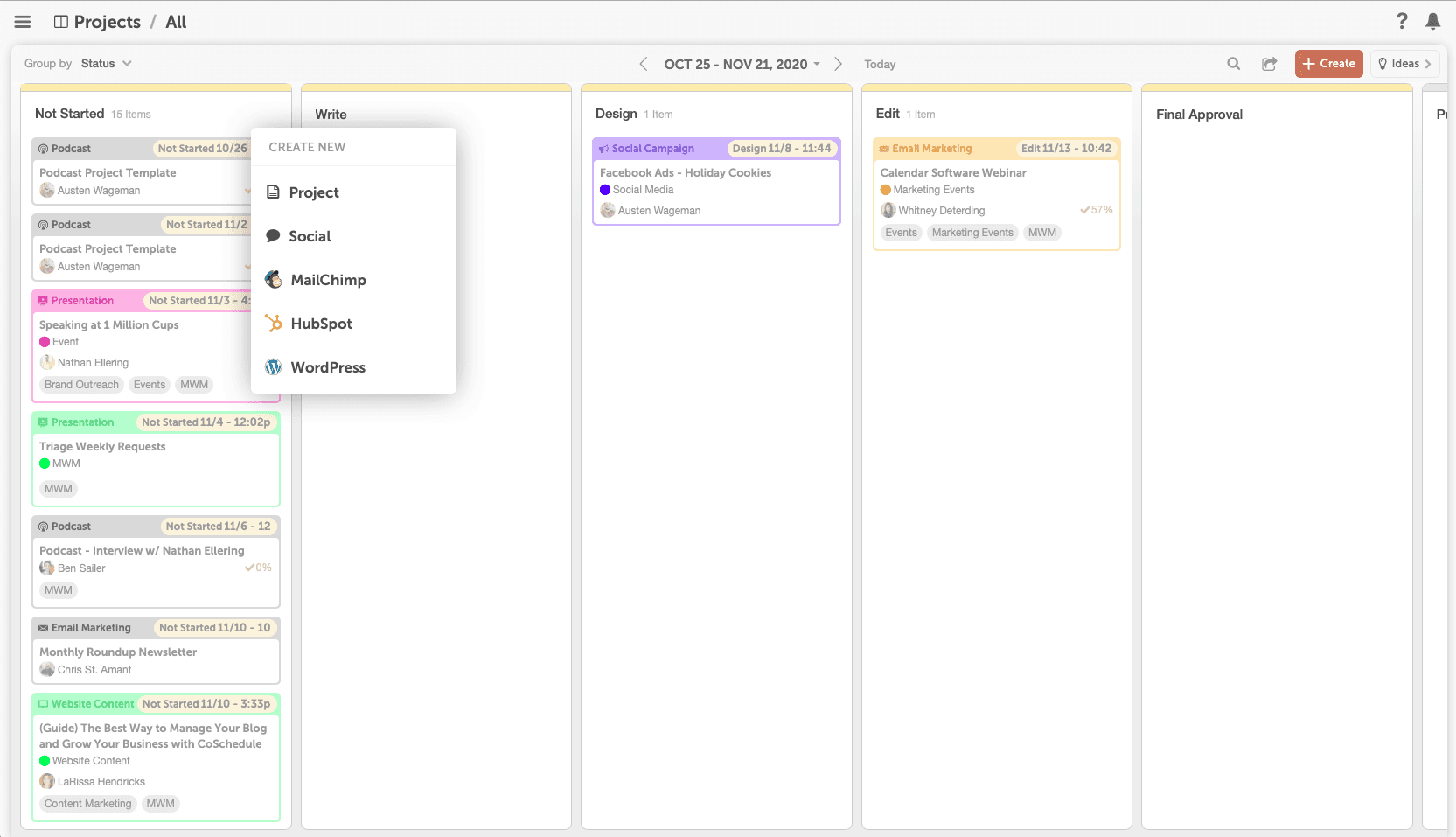
Add a Description
Here’s a quick look at what the interface looks like within a project in CoSchedule. While we’ll go through each area you see below shortly, for now, enter a text description of your email in the Description field.
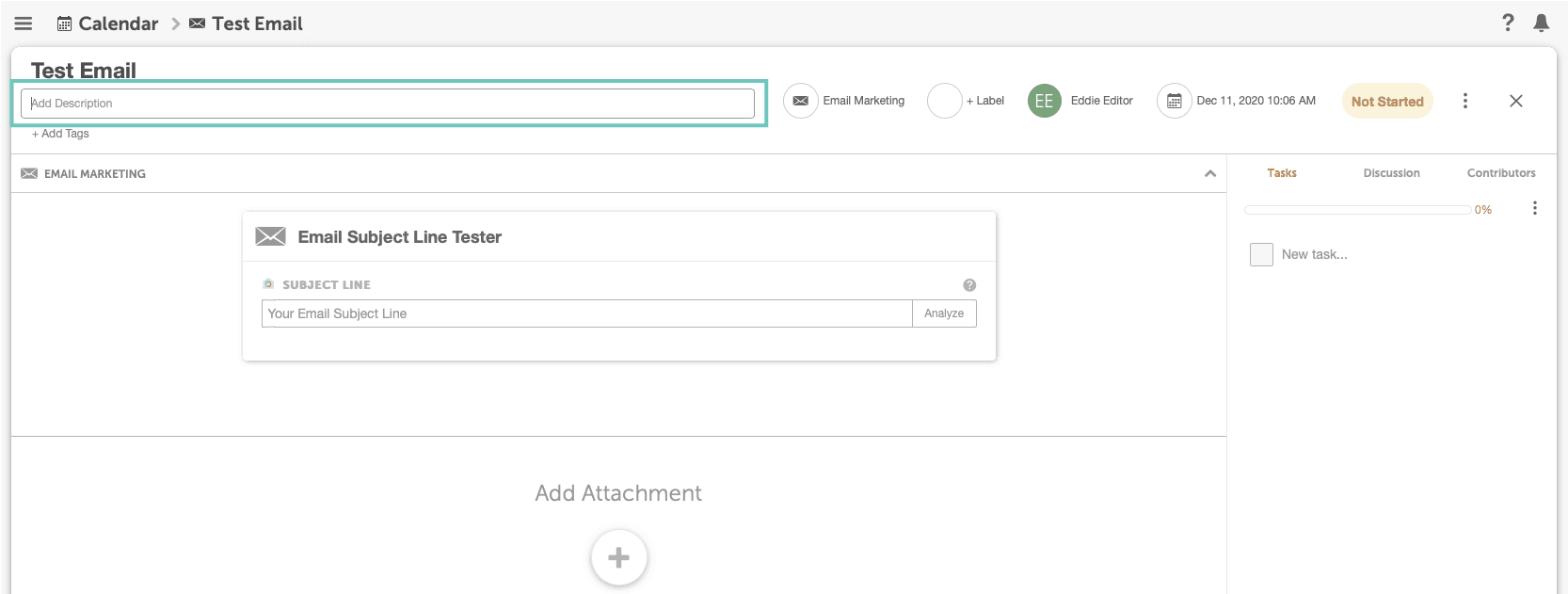
Add Tags for Email Type, Buying Season, and Email List
Next, you can use tags to organize email content by some of the other elements mentioned earlier in this post, like the type of email, buying season it’s aimed at, email list segments that should receive it, or anything else that makes sense for your needs. Start by clicking +Tag underneath the Description field, and you’ll see a list of tags you’ve created.
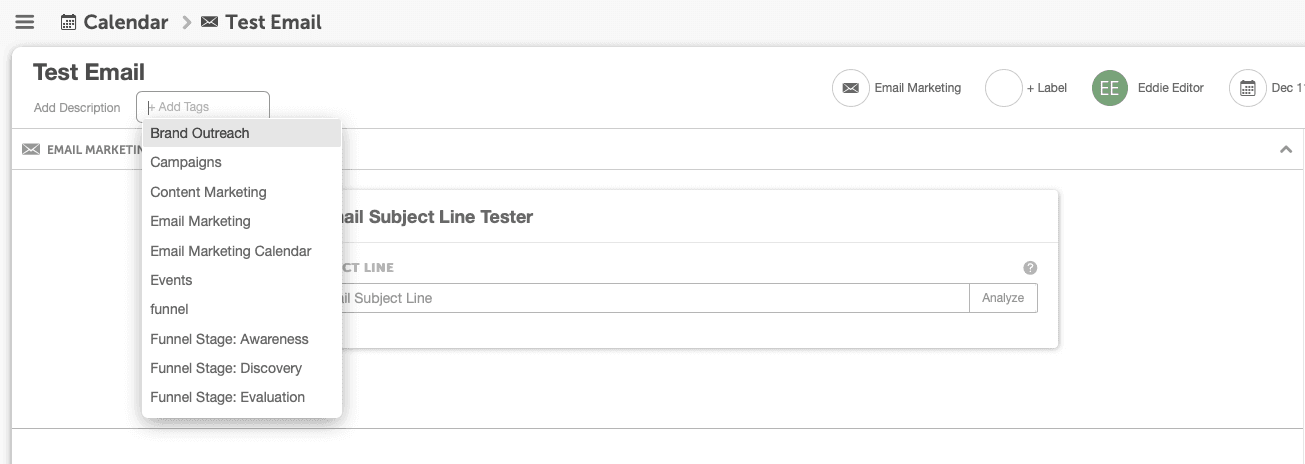
Now, how do you actually create and set which tags are available in your account? Head over to Settings in the left-hand navigation.

Then, scroll down a bit to and add custom tags.
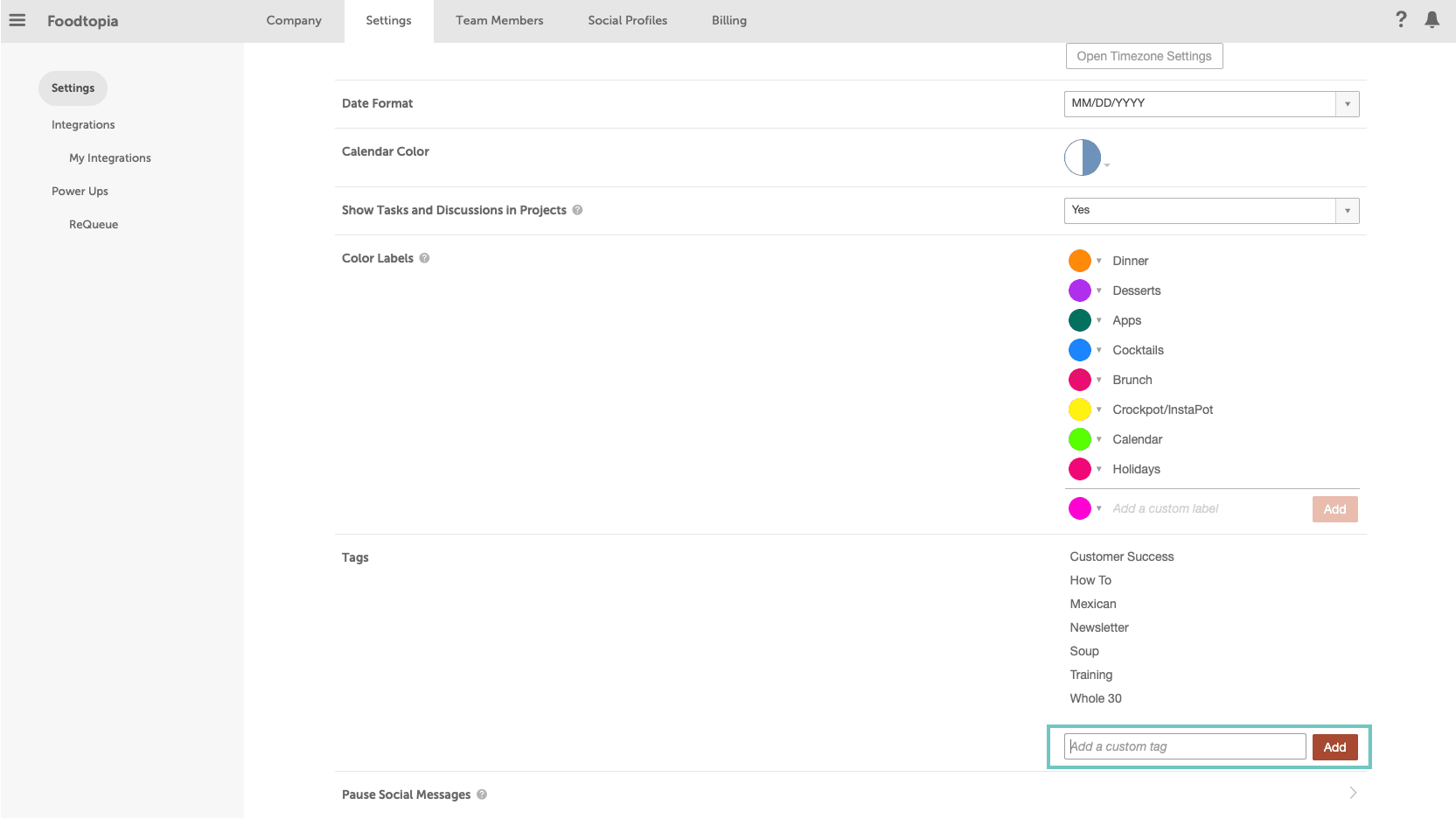
Set Up a Workflow Using Task Templates + Custom Statuses
When your team works on creating your email content, they’ll need a clear workflow to follow. Planning those workflows into checklists will help keep production on track, ensure that deadlines are met, and remove ambiguity around who is doing what and when they’ll get it done.
You can do this in CoSchedule using Task Templates. In the screenshot below, you’ll see a few things:
- Where to find your Task Templates. They’re labelled in the upper right of your screen.
- A list of templates. You can create multiple checklists for all different types of projects — not just email.
- Controls to create, save, and duplicate task templates. This is easy to do.
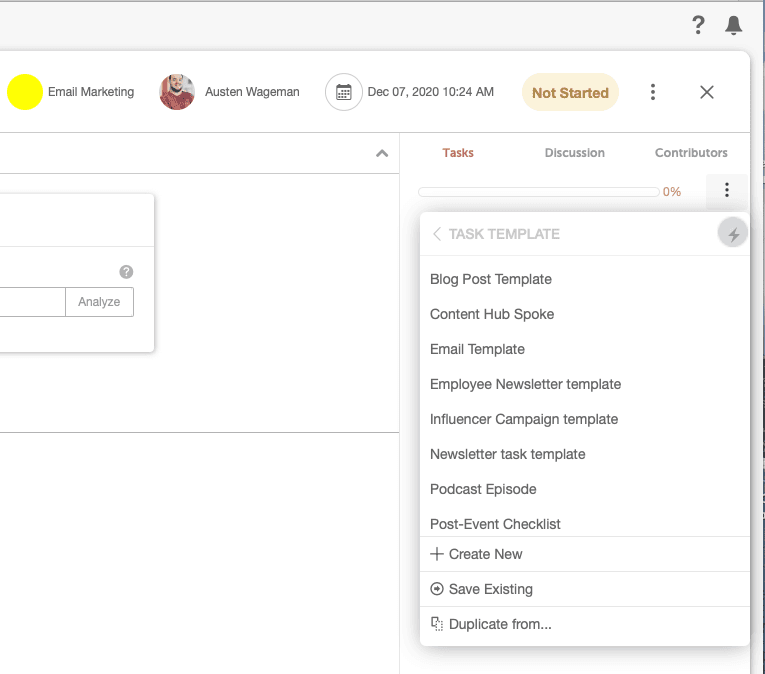
Let’s click on the Email Newsletter task template we have created. This will apply a checklist — note that you can customize your own task templates any way you’d like — that looks like this:
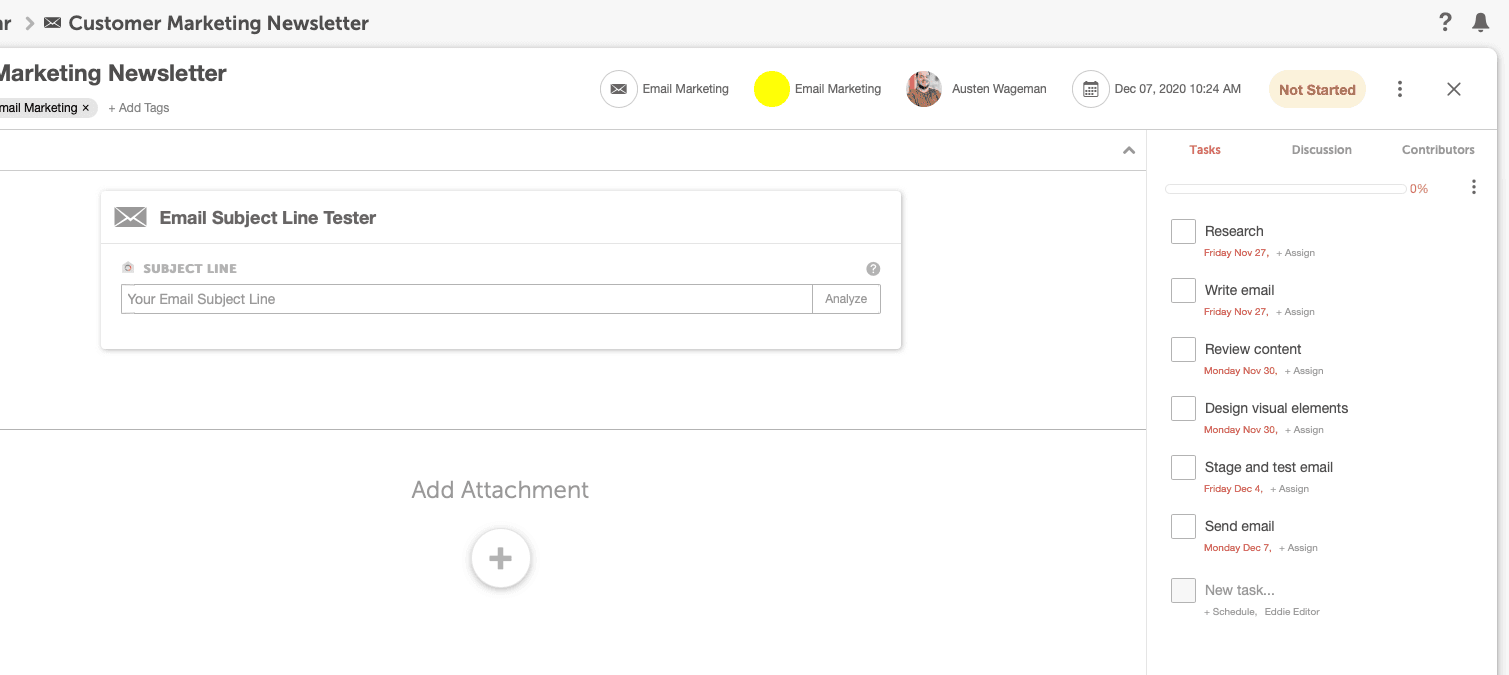
On the right, you’ll see a few things on the checklist:
- The name of each task. What needs to get done?
- When each task is due. You can easily adjust these deadlines.
- Who is responsible for each task. They can check off each task when it’s complete.
Now, it’s likely someone on your team will need to review work before it can be considered complete. CoSchedule supports this with Task Approvals, and they’re easy to set up as well. Start by clicking into a task, and then adding a team member who will need to approve that task before it can be checked off.
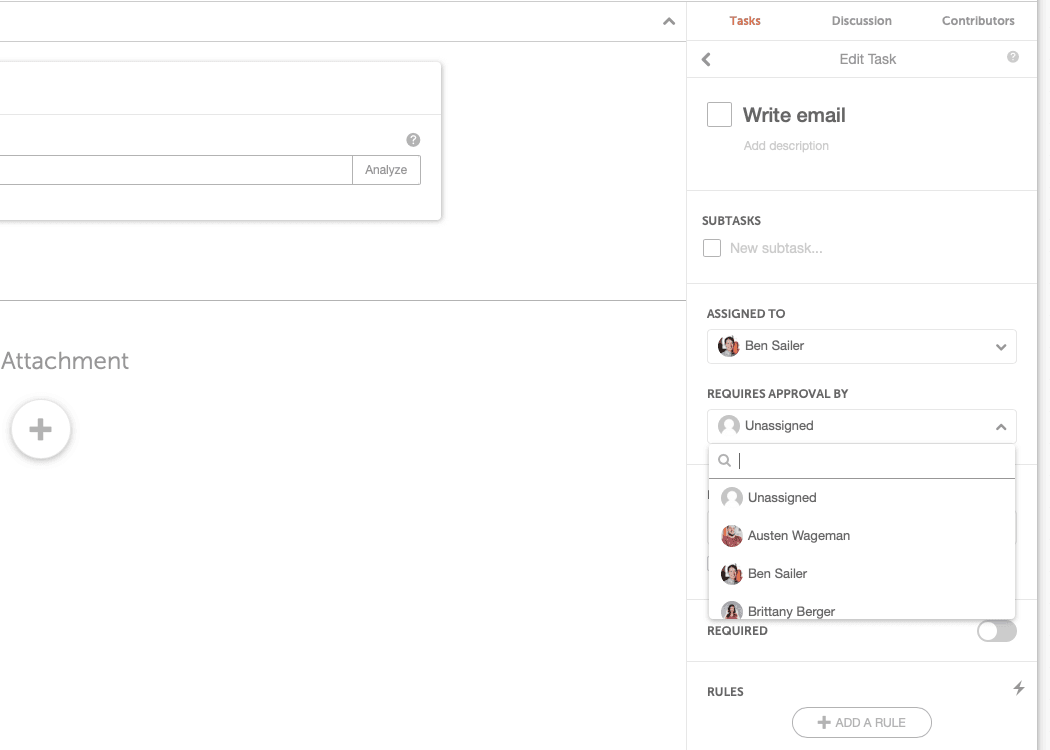
As work progresses on your email, you can also use Custom Statuses to indicate its level of progress. You can see the status in the bottom right.
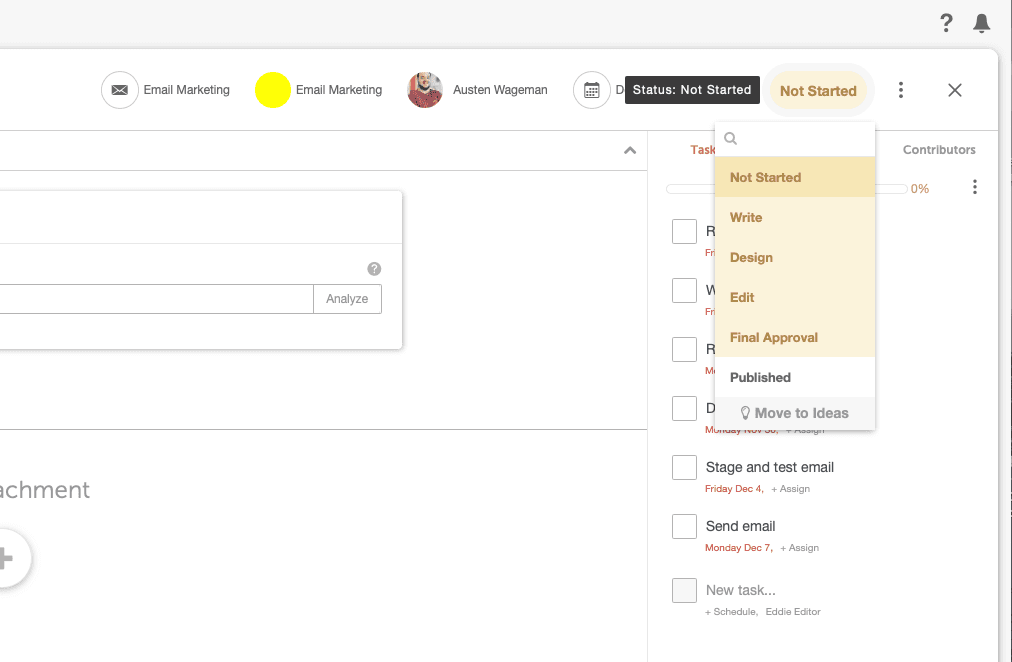
Write an Email Subject Line Using the Built-In Email Subject Line Tester
Once it’s time to start writing your email, begin with the subject line. You can use either the standalone web version of CoSchedule’s Email Subject Line Tester to start, or you can use it, built-in, with CoSchedule.
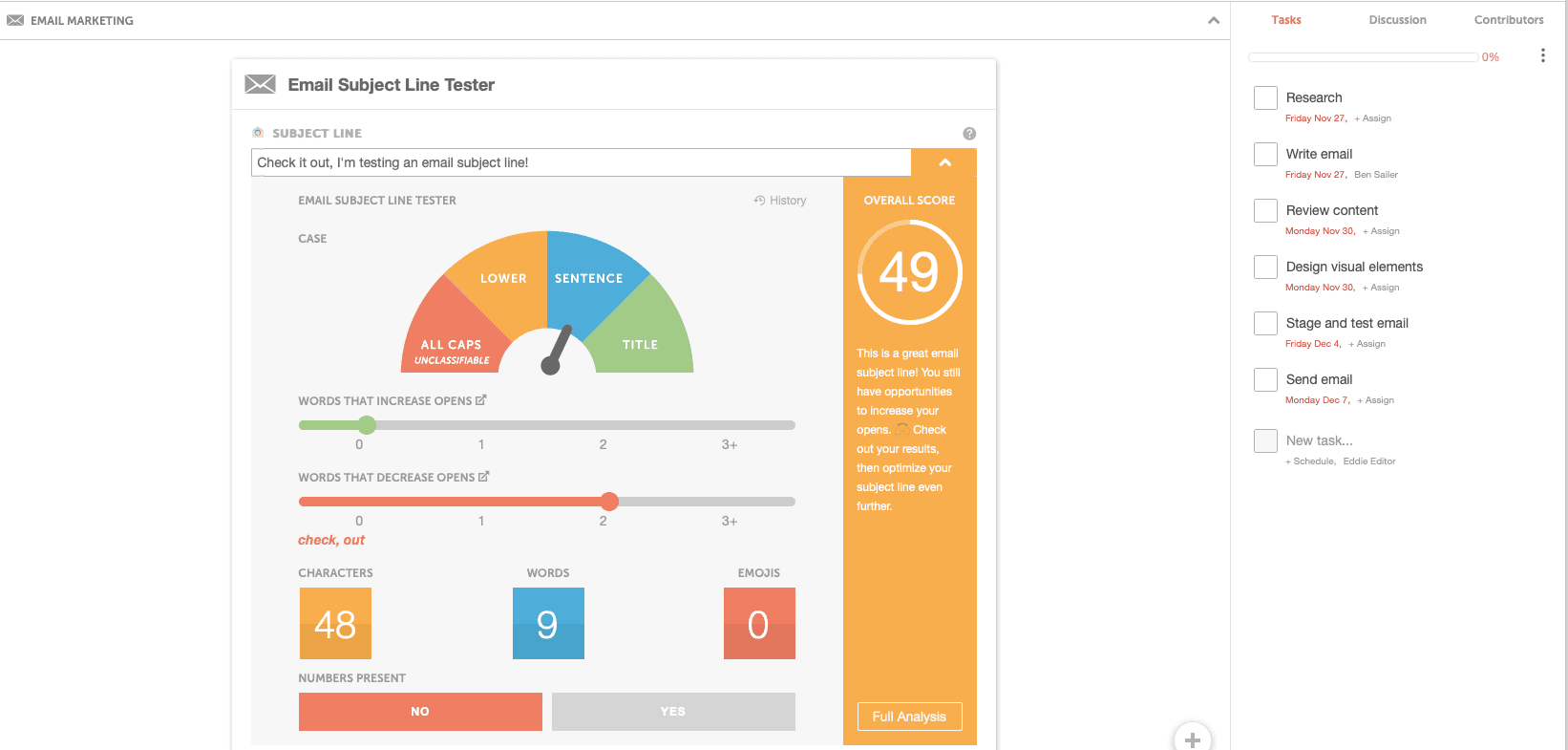
Manage Workflow in CoSchedule + Set Up the Email Newsletter in Your Email Service Provider
Next, you’ll need to create your email content in your email service provider, but you can plan the content and organize your copy — provided you’re writing copy using Google Docs or Word — in CoSchedule. Here’s one way to consider approaching this.
If you’re creating content in Google Docs, then attach your Google Doc as an attachment to your project. You can also attach a Word Doc as a file, link content from Google Drive or Dropbox, or write copy directly in CoSchedule with the built-in text editor — use the option that best suits your workflow.

This makes your email copy easily accessible. You can then use Discussion Threads to discuss the email as your team collaborates throughout the process. If you have images that will be designed for the email, you can use Discussion Threads to pass the files along and share feedback for review purposes as well.
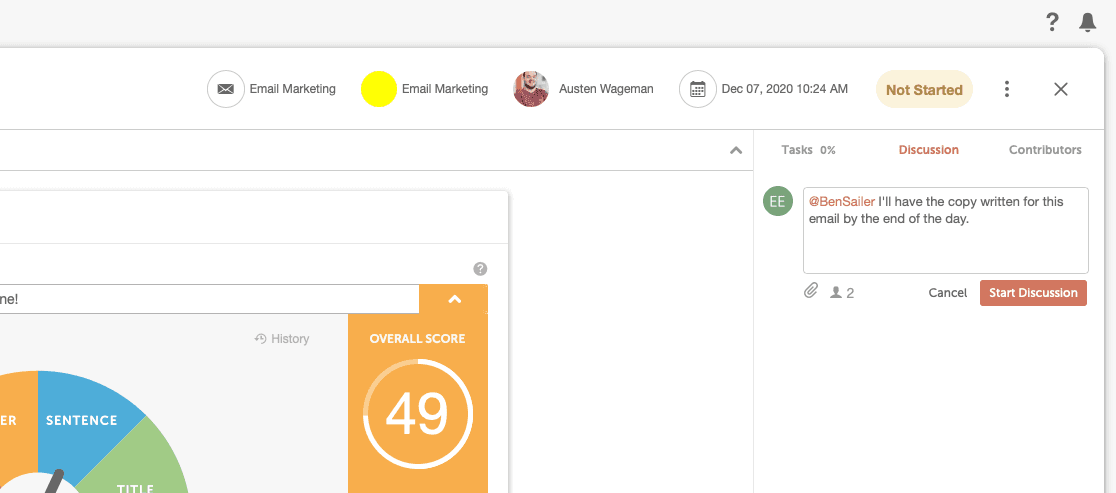
Then, once all your assets are created, you can set up the email in your ESP, and be ready for the final step.
Schedule Send Date and Time
Finally, it’s time to actually schedule your email’s delivery time and date. If you’re using MailChimp, you can adjust the day and time within CoSchedule or in your ESP. Other ESPs are one-way sync only, meaning that you’ll need to schedule the day and time within the ESP, but your send day and time will then be reflected on your CoSchedule calendar, too.
Start Using Your Email Marketing Calendar to Get Organized
Now that you have the tools and knowledge to improve your email calendar for everyday marketing, try out your newfound skills on your marketing newsletter. Master newsletter organization with the tips you’ve learned today, and continue learning how to get the rest of your marketing bearings in order.
Soon, you’ll be the master of marketing calendars.
Ready. Set. Organize!
This post was originally published on April 18, 2018 and was updated on Dec. 14, 2020. Ben Sailer and Peyton Muldoon contributed writing to this post.
The post The Best Email Marketing Calendar Template You Need to Organize Your Newsletters appeared first on CoSchedule Blog.


